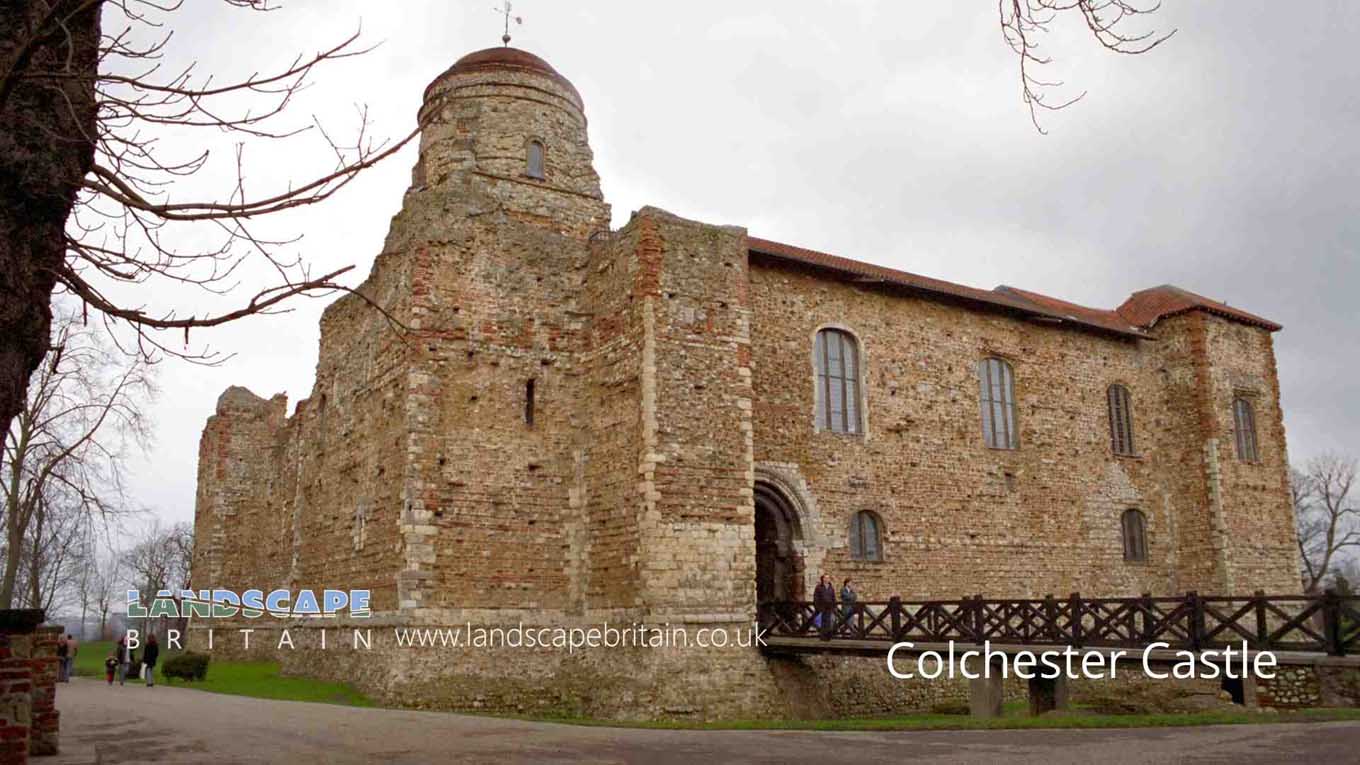
Colchester Castle
Colchester Castle
Located in the town of Colchester, England, Colchester Castle is a destination that can easily be combined with a visit to other attractions in this vibrant city. Visitors will quickly discover why this historic fortress has been at the center of so many important events over its 1100-year history.
The site was originally chosen by William the Conqueror because it was sufficiently removed from London yet still on a well-used route to the continent and near enough for supplies and reinforcements to be brought in.
Beginning in 1076, the castle’s original wooden structure was replaced with a much stronger stone keep. A large bailey protected by a stone wall and a moat was added to this keep a few years later.
Colchester Castle Museum
Today, visitors can tour the museum and get a real glimpse of what life was like in medieval Britain. Experience knights in battle, craftspeople at work, and peasant families going about their daily lives.
Visitors will also be able to climb the keep and view the remains of the Romanesque chapel that once stood on this site.
Roman foundations of Colchester Castle
The Normans constructed the castle over the remains of a Roman temple built during Colchester’s time as Britain’s first Roman capital. They incorporated the temple’s base into the great tower’s foundations.
The Building of Colchester Castle
The castle was begun in 1076, most likely under the supervision of Gundulf, Bishop of Rochester, who erected the White Tower in London. William I ordered a stone fortification to guard the important route between East Anglia and London. To construct their keep, the Normans pillaged Roman Colchester because there was a lack of suitable native stone
Colchester Castle Keep
Both Colchester Castle and the White Tower in London were constructed on the same plan, with an apsidal extension. The corner turrets at Colchester are more prominent, and its main stair is the widest newel staircase in Great Britain, measuring 5 meters across. It’s possible that the castle was originally single-story because remnants of crenell remain.
Medieval Colchester
In 1179, when the town was destroyed in a fire, King John confirmed it as Royal property for Eudo and his heirs. It was not attacked again until 1216, when it was restored to the Crown owing to French occupation; nevertheless, it remained royal property under the care of a succession of keepers or constables throughout medieval times.
Colchester gaol
Colchester Castle was in use as a prison by the 1300s, and it was at times used to house hundreds of prisoners of war. By the 16th century, much of the castle had been destroyed, although it continued to be used as a county jail until 1835.
Colchester Castle Restoration
By the mid-17th century, the castle was owned by a private individual who intended to raze it. However, in 1727, the property was given as a wedding present to Charles Gray, a lawyer and antiquarian, who was responsible for the restoration of Colchester Castle. Gray thought that Colchester Castle was Roman at the time,
Created: 27 October 2021 Edited: 29 November 2023
Colchester Castle Information
Colchester Castle Address
Colchester CO1 1TJ, UK
CO1 1TJ
Website: https://cimuseums.org.uk/visit/venues/colchester-castle/
Get directionsColchester Castle LiDAR Map
Contains public sector information licensed under the Open Government Licence v3.0
Local History around Colchester Castle
There are some historic monuments around including:
Heath Farm Dyke Middle (rear of Alan Way): part of the Iron Age territorial oppidum of CamulodunumTumulus NW of East Donyland HallRemains of an apsidal Roman building at Butt Road and SouthwayMoat Farm Dyke: a northern extension of Lexden Dyke; part of the Iron Age territorial oppidum and Romano-British town of CamulodunumGosbecks Iron Age and Romano-British siteTown WallSmall multivallate hillfort known as Pitchbury RampartsKidman's Dyke North and Middle: part of the Iron Age territorial oppidum of CamulodunumThe Triple Dyke: part of the Iron Age territorial oppidum and Romano-British town of CamulodunumSt Botolph's Augustinian PriorySE corner of Roman town in Easthill House GardensRemains of All Saints Church, 60m north west of Stanway Hall FarmLexden Dyke Middle: part of the Iron Age territorial oppidum and Romano-British town of CamulodunumThe Benedictine Abbey of St JohnEarthwork in Brinkley GroveKidman's Dyke in Walk Wood: part of the Iron Age territorial oppidum of CamulodunumBalkerne GateGryme's Dyke at Stanway Green: part of the Iron Age territorial oppidum and Romano-British town of CamulodunumGryme's Dyke Middle: part of the Iron Age territorial oppidum and Romano-British town of CamulodunumRoman Circus 200m south of Abbey HouseBourne MillRoman barrow known as Lexden Mount: part of the Iron Age territorial oppidum and Roman town of CamulodunumLexden Dyke at Spring Meadow: part of the Iron Age territorial oppidum and Romano-British town of CamulodunumColchester Castle and the Temple of ClaudiusSite of pre-Roman settlementHenge 70m north east of Cross CottagesLexden Tumulus Iron Age barrow and associated cemetery area: part of the Iron Age territorial oppidum of CamulodunumGroup of barrows at Annan RoadDovecote 80m south west of OliversBerechurch Dyke: part of the Iron Age territorial oppidum and Romano-British town of CamulodunumTown ditch.





